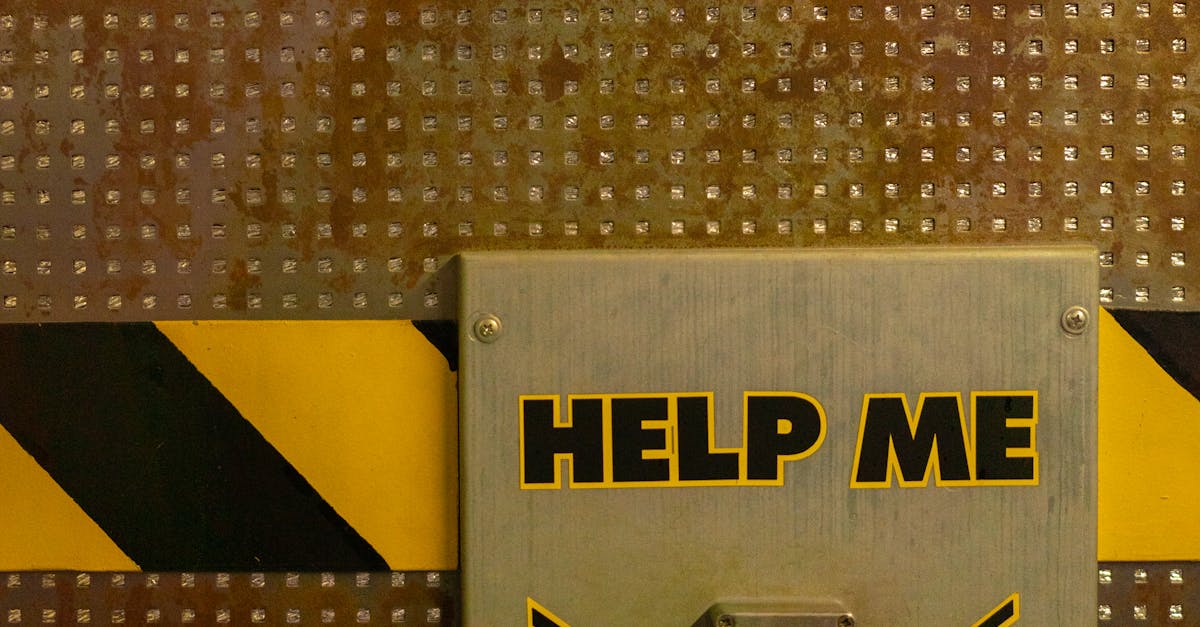
Table Of Contents
Choosing the Right Replacement Toilet
Choosing a replacement toilet involves considering several factors to ensure it meets your needs and preferences. First, assess the flush system. Options range from traditional gravity-fed models to more modern pressure-assisted toilets. Each has unique benefits in terms of efficiency and power. Additionally, efficiency ratings such as the WaterSense label can help identify models that conserve water while still providing effective flushing.
It's also important to factor in the size and configuration of your bathroom. Measure the space to determine the perfect height and bowl shape. Comfort height toilets can be advantageous for those who prefer ease of access. Remember that with a new installation, future toilet repairs may be necessary. Selecting a toilet known for reliability can minimize the frequency of these issues and enhance your overall satisfaction.
Features to Look For
When selecting a new toilet, consider water efficiency as a primary feature. Toilets that are labeled as high-efficiency use around 1.28 gallons per flush compared to older models that may use up to 3.5 gallons. This not only reduces your water bills but also helps conserve water in the long run. Additionally, look for models that offer a dual-flush option, allowing users to choose between a full or partial flush based on the waste being disposed of.
Another important aspect to consider is the ease of installation and maintenance. Many modern toilets are designed for straightforward setup, which can be a significant advantage for DIY enthusiasts. Some features, like a seamless design and fewer crevices, make cleaning easier and can lead to fewer toilet repairs over time. Investing in a model with durable materials and a reliable flushing system will also contribute to a longer lifespan and reduced maintenance issues.
Installation Process for New Toilets
Installing a new toilet can be a straightforward process for those comfortable with DIY projects. First, make sure to gather all the necessary tools and materials, including a wax ring, adjustable wrench, and level. Begin by turning off the water supply, draining the old toilet, and disconnecting it from the water line. Removing the old unit can sometimes be a challenge due to corrosion, so having extra tools on hand for any necessary adjustments is wise. Once the old toilet is out, you can prepare the area for the new installation.
Position the new toilet over the flange and secure it in place with the provided bolts. After ensuring the toilet is level, install the wax ring to prevent leaks and connect the water supply line. Turn the water back on, and check for any signs of toilet repairs needed after installation. Adjustments may be necessary to ensure a tight seal and proper flushing. Taking these steps will help avoid common installation issues and ensure a functional, efficient toilet for the coming years.
DIY vs. Professional Help
When deciding whether to tackle toilet installation as a DIY project or hire a professional, consider your comfort level with plumbing tasks. If you have basic knowledge and some experience with home improvement projects, installing a new toilet may be a manageable task. However, if plumbing work feels daunting or if your current toilet requires significant repairs, seeking professional help can ensure that everything is handled correctly.
Engaging a plumber not only streamlines the installation process but can also prevent potential issues that might arise from improper installations. Professionals come equipped with the right tools and expertise, which can be particularly valuable if your old toilet has led to underlying problems. In addition, their experience allows them to quickly address any unexpected challenges that could complicate toilet repairs later.
Maintenance Tips for New Toilets
Regular maintenance is essential for keeping your new toilet in good working condition. Routine cleaning prevents mineral buildup and stains that can lead to more severe issues. Inspect the toilet for any signs of leakage around the base and the tank. Addressing these issues early can help avoid costly toilet repairs down the line.
Pay attention to the flushing mechanism and ensure it is functioning correctly. A weak flush can indicate issues with the flapper valve or the fill valve. Cleaning these components periodically can enhance their efficiency. Additionally, consider using toilet cleaning tablets designed to maintain performance. These simple maintenance tasks will contribute to the longevity of your toilet.
How to Extend Your Toilet's Life
To extend your toilet's life, regular maintenance is essential. This includes checking for leaks around the base and under the tank, as well as keeping the components inside the tank functioning properly. Clean the toilet bowl regularly to prevent stains and mineral buildup. Pay attention to the flapper valve; if it shows signs of wear or doesn’t create a proper seal, it may need replacement. Regularly inspecting these components can help you catch potential problems early, reducing the need for toilet repairs.
Additionally, be cautious about what goes down the toilet. Items such as feminine hygiene products, wipes, and other non-flushable materials can lead to clogs and damage the plumbing. Installing a toilet tank bank can help reduce water usage without compromising performance. Lastly, be mindful of excessive force on the handle when flushing. Over time, this can lead to functionality issues requiring future toilet repairs. Taking these proactive steps can greatly enhance the longevity of your toilet.
FAQS
What are the signs that I should replace my 20-year-old toilet?
Signs that you should consider replacing your toilet include frequent clogs, visible leaks, cracks in the porcelain, or if it’s using more water than newer models.
How can I determine the right size and type of toilet to replace my old one?
To determine the right size and type of toilet, measure the rough-in distance (the distance from the wall to the center of the toilet flange) and consider your bathroom's space. Research options such as one-piece or two-piece designs, as well as different bowl shapes and heights.
What features should I look for in a replacement toilet?
Look for features such as water-saving dual-flush options, a comfortable height, noise reduction technology, and easy-to-clean surfaces. It can also be beneficial to choose a high-efficiency toilet to reduce water usage.
Is it possible to install a new toilet myself, or should I hire a professional?
If you have basic plumbing skills and tools, you may be able to install a new toilet yourself. However, hiring a professional is recommended for those who are unsure, as it can help prevent leaks and ensure proper installation.
What maintenance can I perform to extend the life of my new toilet?
To extend the life of your new toilet, regularly clean it using appropriate cleaners, check for leaks, ensure the flapper is functioning properly, and avoid flushing non-biodegradable items. Additionally, consider periodic inspections for any issues.



















